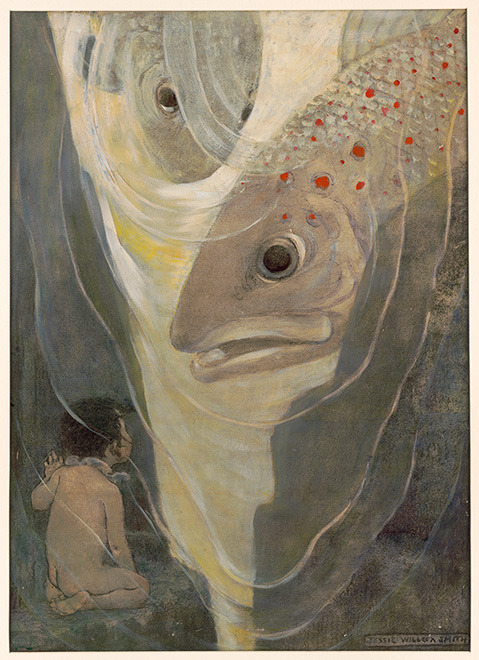#cabinet of american illustration
Explore tagged Tumblr posts
Text
the jedi order is effectively an executive branch of the republic, and that's problematic
the problem: the jedi order presents itself as a neutal, independent peacekeeping force
the issue: in reality, by the prequel trilogy, they were acting like an executive branch of the government
my thesis: this is problematic
and this time I brought receipts. from the prequel trilogy. because I'm tired of people refuting my claim by... further proving my claim because they don't understand what an executive branch of government is (I fear for the american civic education system, truly).
this sentence from mace windu at the start of AOTC encapsulates the problem - the jedi order has uncritically adopted the view that helping, protecting and supporting the republic is equivalent to keeping peace: 'you must realise that there aren't enough Jedi to protect the Republic. We are keepers of the peace, not soldiers.'
a few weeks later: shit why are we soldiers??? jedi rolled a critical fail there, I'm afraid (it's called foreshadowing, a little known literary technique). being a government's military = you are definitely part of the executive branch (thanks US congress [a source]).
why is that problematic? I'll explain this through illustrative example: the republic maintains diplomatic ties with the hutts, who own slaves. the jedi unquestionably support that because that's the republic's position! fuck the slaves. peace for whom, exactly? the rich and powerful? yeah, I don't fuck with that.
first of all, what is an executive branch of government?
according to the state library of NSW: 'The executive is the branch of government that puts government laws and programs into effect. It is made up of the public service and government ministers.'
in this context, when I call the jedi an effective executive branch, I mean that they act like the republic's public servants by exclusively enforcing republic policy in the galaxy... not acting like independent peacekeepers, and later on are even more explicitly so as members of their military.
or, if you only trust american sources: 'The Cabinet and independent federal agencies are responsible for the day-to-day enforcement and administration of federal laws. These departments and agencies have missions and responsibilities as widely divergent as those of the Department of Defense and the Environmental Protection Agency, the Social Security Administration and the Securities and Exchange Commission. Including members of the armed forces, the Executive Branch employs more than 4 million Americans.'
how do the jedi present themselves?
from the opening credits of AOTC: 'This separatist movement has made it difficult for the limited number of Jedi knights to maintain peace and order in the galaxy.' Mace Windu also calls them 'peacekeepers, not soldiers'.
Peackeepers = maintainers of peace and order in the galaxy.
What peacekeepers are not = enforcers of a particular government, like the republic's, will.
why are they effectively an executive branch of the republic?
this meta draws pretty heavily on AOTC.
firstly, I say 'effectively' because they're not OFFICIALLY an executive branch, but they act like one
so. start of AOTC. four members of the jedi council are meeting with palpatine, discussing the role the jedi will play in the separatist conflict, clearly on behalf of the republic. yoda says: 'do their duty [for the republic, it is implied] the jedi will'.
they accept the republic's position as unquestionably righteous, they don't consider the legitimacy of the separatists' concerns, and fall into the 'us' vs 'them' trap
should a peacekeeping force explicitly pick one side over the other? no, they should be neutral (I know a thing or two about neutral humanitarian organisations; I'm using the red cross as my baseline).
getting back to AOTC, palpatine, the head of the republic, the chancellor, the person in charge of the executive, 'suggests' that padme be put under the jedi's protection, and bail questions whether that is a 'wise use of manpower', implying that it is regular practice for palpatine, the chancellor, and other members of the senate, to direct jedi action*
later in the movie, obi-wan has ANOTHER meeting with palpatine, some senators, and members of the council, again demonstrating how intertwined the republic and the jedi are
*that's not very independent girlboss of them now is it?
and here, we have anakin telling queen jamilla, that 'the jedi have not been allowed to investigate [into whether or not the trade federation actually followed through and reduced their armies, as ordered to do so in a court after the naboo invasion]. it would be too dangerous for the economy, we were told'. this does not suggest independence - it suggests that jedi have a leash around their neck from the senate, curtailed in what they can do to what the senate thinks is okay (even if queen jamilla probably would have appreciated it).
later on, palpatine: 'we must rely on the jedi. Master Yoda, how many are available to go to Geonosis?' hm the head of the republic ordering the jedi to do something. almost like... the head of the executive branch ordering other executive members lower down to do something! mace later says: 'we have the authority to do something' [and so we shall go to geonosis].
it's almost like. they've become agents of the republic and enforce their laws and policies on their behalf. and require republic approval before doing anything. like an executive branch of government does.
why is this problematic?
you cannot be an independent peacekeeping force if you exclusively act on behalf of the whims of a particular government, here the republic. the jedi only act under the senate's authority, which means that they will make the same priorities that the senate does, which tend to prioritise core worlds and fuck over slaves in the unconquered outer rim territories because the hutts are good trading partners, for them..
the jedi should have never have become servants of the republic. allies, sure.
uncritically carrying out their will? nah, fuck that. the senate is not the people.
42 notes
·
View notes
Text
This very cool post by @clouseplayssims reminded me that I have a mid-century home design book of my own! I always love getting a glimpse at what was considered peak contemporary design in past decades, and I have a feeling a lot of simmers feel the same, so I thought I'd share a few pages.
The book is a big ring-bound thing called What a Home Should Be, and I can't find a copyright date anywhere inside, but it's all about design principles for building the ideal (by mid-century American standards) post-war ranch-style home, complete with floorplans, exteriors, and a mix of photographed and illustrated interiors.
There's a lot of focus on the kitchen:





Because of course, that's where "Mrs. Homemaker" is going to spend most of her time.
Speaking of the text, it's sooo gendered and of its time you just have to laugh. An excerpt:
When you stop to consider the time that Mrs. Homemaker spends in her kitchen, it is easy to see why this room is probably the most important place in the house as far as the average feminine adult is concerned. You, Mother, have the important job of getting a husband off to work in the morning, anywhere from one to a half dozen vigorous children off to school. This means that you are busy in the kitchen starting with the very first morning moments, seeing to it that the small fry and Daddy are properly stuffed with vitamins, orange juice and their favorite brand of shredded wheat.
But it does also make plenty of good design points--see the page at top about kitchen work triangles.
An interesting element in several of these kitchens: kitchen "work-planning centers" where Mrs. Homemaker can sit down to do all the household admin.
A few living rooms and one of the exteriors I mentioned:



I love the built-in stone seating arrangement in the last of these.
And don't worry--bathrooms are not neglected:

Tile and plastic-covered countertops--the height of elegance!
The calm, strong tones of the wood-paneled walls and cabinet contrast elegantly with the plastic-surfaced counter.
Hope some of you enjoyed. :)
#non sims#but somewhat sims related considering so many simmers I know have more than a passing interest in architecture and interior design#I need to remember to use this book when building more homes for Panorama#long post#mid century homes
21 notes
·
View notes
Text

Jessie Willcox Smith (American, 1863–1935). Oh, Don't Hurt Me! Cried Tom. I Only Want to Look at You; You Are So Handsome • 1916 •Published in Charles Kingsley The Water Babies • 1916 • Charcoal, watercolor, and oil. Gift of the artist, 1935. Cabinet of American Illustration, Prints and Photographs Division, Library of Congress
#illustration#jesse wilcox smith#golden age of illustration#the water babies#american illustrators#book illustration#sassafras and moonshine
129 notes
·
View notes
Text

Nick Anderson
* * * *
LETTERS FROM AN AMERICAN
January 6, 2025
Heather Cox Richardson
Jan 07, 2025
In less than 40 minutes today in snow-covered Washington, D.C., a joint session of Congress counted the certified electoral votes that will make Republican Donald Trump president of the United States at noon on January 20. Vice President Kamala Harris presided over the session in her role as president of the Senate, announcing to Congress the ballot totals. The ceremony went smoothly, without challenges to any of the certified state ballots. Trump won 312 electoral votes; Harris, who was the Democratic nominee for president, won 226.
The Democrats emphasized routine process and acceptance of election results to reinforce that the key element of democracy is the peaceful transfer of power. Before the session, Harris released a video on social media reminding people that “[t]he peaceful transfer of power is one of the most fundamental principles of American democracy. As much as any other principle, it is what distinguishes our system of government from monarchy or tyranny.”
But at the session, the tableau on the dais itself illustrated that Republicans have elevated lawmakers who reject that principle. Behind the vice president sat the newly reelected speaker of the House of Representatives, Mike Johnson (R-LA), who was a key player in the attempt to overturn the results of the 2020 election: he lied about fraud; recruited colleagues to join a lawsuit challenging the election results from the key states of Georgia, Michigan, Pennsylvania, and Georgia; and, after the January 6 riot, challenged the counting of certified votes from Arizona and Pennsylvania.
After the session concluded, Harris told reporters: “Well, today was…obviously, a very important day, and it was about what should be the norm and what the American people should be able to take for granted, which is that one of the most important pillars of our democracy is that there will be a peaceful transfer of power.
“And today, I did what I have done my entire career, which is take seriously the oath that I have taken many times to support and defend the Constitution of the United States, which included, today, performing my constitutional duties to ensure that the people of America, the voters of America will have their votes counted, that those votes matter, and that they will determine, then, the outcome of an election.
“I do believe very strongly that America’s democracy is only as strong as our willingness to fight for it—every single person, their willingness to fight for and respect the importance of our democracy. Otherwise, it is very fragile and it will not be able to withstand moments of crisis.
“And today, America’s democracy stood.”
Democracy stood in the sense that its norms were honored today as they were not four years ago, which is no small thing. But it is a blow indeed that the man who shattered those norms by trying to overturn the will of the American voters and seize the government will soon be leading it again.
It did not seem initially as if any such a resurrection was possible. While MAGA lawmakers and influencers tried to insist that “Antifa” or FBI plants had launched the riot that made congress members hide in fear for their lives while Secret Service agents rushed Trump’s vice president, Mike Pence, to a secure location, that left at least seven people dead and at least 140 police officers wounded, and that did about $3 million of damage to the Capitol as rioters broke windows and doors, looted offices, smeared feces on the walls, and tore down an American flag to replace it with a Trump flag, there was little doubt, even among Trump loyalists, as to who was to blame.
All four living presidents condemned Trump and his supporters; Twitter, Facebook, and Instagram all suspended him; members of his cabinet resigned in protest; corporations and institutions dropped their support for Trump.
Indeed, it seemed that the whole Trump ship was foundering. Trump advisor Hope Hicks texted Ivanka Trump’s chief of staff that the Trump family was now “royally f*cked.” “In one day he ended every future opportunity that doesn’t include speaking engagements at the local proud boy’s chapter,” Hicks wrote. “And all of us that didn’t have jobs lined up will be perpetually unemployed. I’m so mad & upset. We all look like domestic terrorists now.” “Not being dramatic, but we are all f*cked.”
Even then–Senate minority leader Mitch McConnell (R-KY) delivered a blistering account of Trump’s behavior and said: “There is no question that President Trump is practically and morally responsible for provoking the events of that day.”
But McConnell appeared reluctant to see Trump impeached. He delayed the Senate trial of the House’s charge of “incitement of insurrection” until Biden was president, then pressed for Trump’s acquittal on the grounds that he was no longer president. Even before that February 2021 acquittal, then–House minority leader Kevin McCarthy (R-CA)—who had had a shouting match with Trump on January 6 in which he allegedly begged Trump to call off his supporters and yelled that the rioters were “trying to f*cking kill me!”—traveled to see Trump at Mar-a-Lago to get him to support Republican candidates in the 2022 election.
Their hunger to keep Trump’s voters began the process of whitewashing Trump’s attempt to overturn our democracy. At the same time, those Republicans who had either participated in the scheme or gone along with it continued to defend their behavior. As time passed, they downplayed the violence of January 6. As early as May 2021, some began to claim it was less a deadly attack than a “normal tourist visit.”
When the House Select Committee to Investigate the January 6th Attack on the U.S. Capitol began to collect testimony and evidence, Trump and fellow Republicans did all they could to discredit it. As it became clear that Trump would win the 2024 Republican presidential nomination, they worked to exonerate him from wrongdoing and accused the Democrats of misleading Americans about the events of that day.
In February 2021, McConnell defended his vote to acquit Trump of inciting insurrection by promising the courts would take care of him. “President Trump is still liable for everything he did while he was in office, as an ordinary citizen,” he said, “still liable for everything he did while in office, [and] didn't get away with anything yet…. We have a criminal justice system in this country. We have civil litigation. And former presidents are not immune from being held accountable by either one.”
But while more than 1,500 people have been charged with federal crimes associated with the January 6 attack on the U.S. Capitol and many of Trump’s lawyers and advisors have been disbarred or faced charges, Trump has managed to avoid legal accountability by using every possible means to delay the federal case brought against him for his attempt to overturn the results of the 2020 presidential election.
And now, with the help of a compliant Supreme Court stacked with three of his own appointees, he has gained the immunity McConnell said he did not have. On July 1, 2024, the Supreme Court handed down the aptly named Donald Trump v. United States decision, establishing that sitting presidents have immunity from criminal prosecution for acts within the scope of their official duties. Before the new, slimmer set of charges brought after this decision could go forward, voters reelected Trump to the presidency, triggering the Justice Department policy against prosecuting a sitting president.
As Republicans whitewashed January 6 and the legal system failed to hold Trump to account, the importance of Trump’s attack on our democracy seemed to fade. Even the Trump v. U.S. Supreme Court decision, which undermined the key principle that all Americans are equal before the law by declaring Trump above it, got less attention than its astonishingly revolutionary position warranted, coming as it did just four days after President Joe Biden looked and sounded old in a televised presidential debate.
As the 2024 election approached, Trump rewrote the events of January 6 so completely that he began calling it “a day of love.” He said those found guilty of crimes related to January 6 were “political prisoners” and vowed to pardon them on his first day in office. Dan Barry and Alan Feuer noted in the New York Times today that Trump spokesperson Karoline Leavitt, referring to “the Left’s fear mongering over January 6th,” claims that “the mainstream media still refuses to report the truth about what happened that day.”
And yet, today, Trump’s lawyers wrote to Attorney General Merrick Garland demanding he prevent the public release of the final report written by special counsel Jack Smith about Trump’s attempt to overturn the results of the 2020 presidential election. They say it would disrupt the presidential transition by “giving rise to a media storm of false and unfair criticism” and interfere with presidential immunity by diverting Trump’s time and energy.
Having reviewed the two-volume report, the lawyers objected to its claim that Trump and others “engaged in an unprecedented criminal effort,” that Trump was “the head of the criminal conspiracies,” that he hatched a “criminal design,” and that he “violated multiple federal criminal laws.” They also took issue with the “baseless attacks on other anticipated members of President Trump’s incoming administration, which are an obvious effort to interfere with upcoming confirmation hearings.”
They conclude that releasing Smith’s report “would not ‘be in the public interest.’”
LETTERS FROM AN AMERICAN
HEATHER COX RICHARSON
#political cartoons#Nick Anderson#Letters From An American#Heather Cox Richardson#coup attempt#fuck qanon#we did this to ourselves#conspiracy theories#fafo#American History#history#January 6 2021#criminal design#The Mafia Administration#American Democracy
18 notes
·
View notes
Text
January 6, 2025
HEATHER COX RICHARDSON
JAN 7
In less than 40 minutes today in snow-covered Washington, D.C., a joint session of Congress counted the certified electoral votes that will make Republican Donald Trump president of the United States at noon on January 20. Vice President Kamala Harris presided over the session in her role as president of the Senate, announcing to Congress the ballot totals. The ceremony went smoothly, without challenges to any of the certified state ballots. Trump won 312 electoral votes; Harris, who was the Democratic nominee for president, won 226.
The Democrats emphasized routine process and acceptance of election results to reinforce that the key element of democracy is the peaceful transfer of power. Before the session, Harris released a video on social media reminding people that “[t]he peaceful transfer of power is one of the most fundamental principles of American democracy. As much as any other principle, it is what distinguishes our system of government from monarchy or tyranny.”
But at the session, the tableau on the dais itself illustrated that Republicans have elevated lawmakers who reject that principle. Behind the vice president sat the newly reelected speaker of the House of Representatives, Mike Johnson (R-LA), who was a key player in the attempt to overturn the results of the 2020 election: he lied about fraud; recruited colleagues to join a lawsuit challenging the election results from the key states of Georgia, Michigan, Pennsylvania, and Georgia; and, after the January 6 riot, challenged the counting of certified votes from Arizona and Pennsylvania.
After the session concluded, Harris told reporters: “Well, today was…obviously, a very important day, and it was about what should be the norm and what the American people should be able to take for granted, which is that one of the most important pillars of our democracy is that there will be a peaceful transfer of power.
“And today, I did what I have done my entire career, which is take seriously the oath that I have taken many times to support and defend the Constitution of the United States, which included, today, performing my constitutional duties to ensure that the people of America, the voters of America will have their votes counted, that those votes matter, and that they will determine, then, the outcome of an election.
“I do believe very strongly that America’s democracy is only as strong as our willingness to fight for it—every single person, their willingness to fight for and respect the importance of our democracy. Otherwise, it is very fragile and it will not be able to withstand moments of crisis.
“And today, America’s democracy stood.”
Democracy stood in the sense that its norms were honored today as they were not four years ago, which is no small thing. But it is a blow indeed that the man who shattered those norms by trying to overturn the will of the American voters and seize the government will soon be leading it again.
It did not seem initially as if any such a resurrection was possible. While MAGA lawmakers and influencers tried to insist that “Antifa” or FBI plants had launched the riot that made congress members hide in fear for their lives while Secret Service agents rushed Trump’s vice president, Mike Pence, to a secure location, that left at least seven people dead and at least 140 police officers wounded, and that did about $3 million of damage to the Capitol as rioters broke windows and doors, looted offices, smeared feces on the walls, and tore down an American flag to replace it with a Trump flag, there was little doubt, even among Trump loyalists, as to who was to blame.
All four living presidents condemned Trump and his supporters; Twitter, Facebook, and Instagram all suspended him; members of his cabinet resigned in protest; corporations and institutions dropped their support for Trump.
Indeed, it seemed that the whole Trump ship was foundering. Trump advisor Hope Hicks texted Ivanka Trump’s chief of staff that the Trump family was now “royally f*cked.” “In one day he ended every future opportunity that doesn’t include speaking engagements at the local proud boy’s chapter,” Hicks wrote. “And all of us that didn’t have jobs lined up will be perpetually unemployed. I’m so mad & upset. We all look like domestic terrorists now.” “Not being dramatic, but we are all f*cked.”
Even then–Senate minority leader Mitch McConnell (R-KY) delivered a blistering account of Trump’s behavior and said: “There is no question that President Trump is practically and morally responsible for provoking the events of that day.”
But McConnell appeared reluctant to see Trump impeached. He delayed the Senate trial of the House’s charge of “incitement of insurrection” until Biden was president, then pressed for Trump’s acquittal on the grounds that he was no longer president. Even before that February 2021 acquittal, then–House minority leader Kevin McCarthy (R-CA)—who had had a shouting match with Trump on January 6 in which he allegedly begged Trump to call off his supporters and yelled that the rioters were “trying to f*cking kill me!”—traveled to see Trump at Mar-a-Lago to get him to support Republican candidates in the 2022 election.
Their hunger to keep Trump’s voters began the process of whitewashing Trump’s attempt to overturn our democracy. At the same time, those Republicans who had either participated in the scheme or gone along with it continued to defend their behavior. As time passed, they downplayed the violence of January 6. As early as May 2021, some began to claim it was less a deadly attack than a “normal tourist visit.”
When the House Select Committee to Investigate the January 6th Attack on the U.S. Capitol began to collect testimony and evidence, Trump and fellow Republicans did all they could to discredit it. As it became clear that Trump would win the 2024 Republican presidential nomination, they worked to exonerate him from wrongdoing and accused the Democrats of misleading Americans about the events of that day.
In February 2021, McConnell defended his vote to acquit Trump of inciting insurrection by promising the courts would take care of him. “President Trump is still liable for everything he did while he was in office, as an ordinary citizen,” he said, “still liable for everything he did while in office, [and] didn't get away with anything yet…. We have a criminal justice system in this country. We have civil litigation. And former presidents are not immune from being held accountable by either one.”
But while more than 1,500 people have been charged with federal crimes associated with the January 6 attack on the U.S. Capitol and many of Trump’s lawyers and advisors have been disbarred or faced charges, Trump has managed to avoid legal accountability by using every possible means to delay the federal case brought against him for his attempt to overturn the results of the 2020 presidential election.
And now, with the help of a compliant Supreme Court stacked with three of his own appointees, he has gained the immunity McConnell said he did not have. On July 1, 2024, the Supreme Court handed down the aptly named Donald Trump v. United States decision, establishing that sitting presidents have immunity from criminal prosecution for acts within the scope of their official duties. Before the new, slimmer set of charges brought after this decision could go forward, voters reelected Trump to the presidency, triggering the Justice Department policy against prosecuting a sitting president.
As Republicans whitewashed January 6 and the legal system failed to hold Trump to account, the importance of Trump’s attack on our democracy seemed to fade. Even the Trump v. U.S. Supreme Court decision, which undermined the key principle that all Americans are equal before the law by declaring Trump above it, got less attention than its astonishingly revolutionary position warranted, coming as it did just four days after President Joe Biden looked and sounded old in a televised presidential debate.
As the 2024 election approached, Trump rewrote the events of January 6 so completely that he began calling it “a day of love.” He said those found guilty of crimes related to January 6 were “political prisoners” and vowed to pardon them on his first day in office. Dan Barry and Alan Feuer noted in the New York Times today that Trump spokesperson Karoline Leavitt, referring to “the Left’s fear mongering over January 6th,” claims that “the mainstream media still refuses to report the truth about what happened that day.”
And yet, today, Trump’s lawyers wrote to Attorney General Merrick Garland demanding he prevent the public release of the final report written by special counsel Jack Smith about Trump’s attempt to overturn the results of the 2020 presidential election. They say it would disrupt the presidential transition by “giving rise to a media storm of false and unfair criticism” and interfere with presidential immunity by diverting Trump’s time and energy.
Having reviewed the two-volume report, the lawyers objected to its claim that Trump and others “engaged in an unprecedented criminal effort,” that Trump was “the head of the criminal conspiracies,” that he hatched a “criminal design,” and that he “violated multiple federal criminal laws.” They also took issue with the “baseless attacks on other anticipated members of President Trump’s incoming administration, which are an obvious effort to interfere with upcoming confirmation hearings.”
They conclude that releasing Smith’s report “would not ‘be in the public interest.’”
—
11 notes
·
View notes
Text


Welcome to the flamboyantly colorful home of creative consultant Max Hurd. It's a redone London Victorian terrace home. Just look at this entrance hall. It's a contemporary take on a country home that Max did in collaboration with designer Benedict Foley.

The drawing room adjoins the library at the front of the house.

When Max bought this house, it was painted entirely in white.

From the library is a clear sight line thru to the kitchen.

The carved table is Burmese and I'm not sure if it was originally red or if Max & Benedict painted it.

Max kept the original kitchen, but may redo it in the future. Don't the tops of the cabinets look like a castle?

I wonder if this would look tacky if you gave it a castle theme.

The vintage chintz fabric on the banquette was found in remnants on Ebay and they've been intentionally placed not to match.

A guest powder room.

Circus-like painted doors to the bedrooms on the 2nd level.

The plaster shell holding the fabric above the bed came from Italy and the headboard was found on Ebay.

The wallpaper pattern is called "Tented Stripe" and gives a nod to the circus theme out in the hall.

The classic style toilet was found on Ebay.

Max's housemate's room has an American 19th century quilt on the bed. Another, damaged quilt, covers the headboard.

From Hugh's room the purple stairs to the attic are visible.

This rooms color scheme was inspired by a staff swimming pool in Hamburg.

And this is the owner, Max, sitting with his cat, Count Vronsky.
45 notes
·
View notes
Text











OTD in Music History: Legendary 19th Century singer Jenny Lind (1820 - 1887) dies in England. Nicknamed "The Swedish Nightingale," Lind was one of the most fabulously successful musical superstars of her era. After making her big break in a performance of Carl Maria von Weber's (1786 - 1826) "Der Freischutz" in Stockholm in 1838, Lind embarked upon an extended European tour during the 1840's before turning her eyes to the ultimate financial prize: North America. In 1850, Lind traveled to America at the "invitation" of P.T. Barnum (1810 - 1891), who promised to "endlessly promote her" and make her "fabulously wealthy." He kept his word on both counts; indeed, his constant over-the-top marketing campaign eventually wore on Lind's nerves, and after performing 93 large-scale concerts for Barnum she actually invoked a termination clause in her contract and then continued the rest of the tour under own management, ultimately earning more than $350,000 (equivalent to ~$13,000,000 in 2024-adjusted dollars) for her efforts. (NB: This tour was a major plot point in the 2017 Hollywood movie "The Greatest Showman," which portrays Lind as a fame- and money-hungry seductress with romantic designs on Barnum. In reality, Lind was a devoutly-religious married woman who did not care for Barnum's larger-than-life personality, and she ultimately ended up donating the vast bulk of her income to a variety of charities.) After returning to Europe in 1852, Lind went into semi-retirement and focused most of her time on raising her three children, only occasionally emerging to give charity concerts. From 1855 onward she lived in Britain, where she was venerated by an adoring public. PICTURED: A relic from Lind's famous American tour — an original program that was handed out to attendees at one of her Boston appearances (c. 1850 - 1851). Featuring several hand-colored illustrations, printed lyrics to her various concert selections, and plenty of press reviews (including a glowing multi-page biography), this program itself was quite a production for its time! Also shown is a later-printed (c. 1890s/1900s) copy of a cabinet photo showing Lind (c. 1850s).
#classical music#opera#music history#bel canto#composer#classical composer#aria#classical studies#maestro#chest voice#Jenny Lind#The Swedish Nightingale#Swedish Nightingale#The Nightingale#classical history#history of music#historian of music#musician#musicians#diva#prima donna#Royal College of Music#Frédéric Chopin
5 notes
·
View notes
Text
There are two parts of this podcast episode that really struck me.
The first is why the different generations of Americans are reacting differently to the Israeli war against Hamas, which I'll summarize below.
The second part is Rabbi Sharon Brous sharing an ancient Israeli practice that beautifully illustrates mourning with those who mourn and seeing each other's humanity. Go to the 53:00 mark of the episode to hear it.
—————————————————————
There's the older generation of Americans who saw Israel when it was small and weak and in danger of being eliminated by its neighbors. They have a sense of Israel's impossibility and its vulnerabilities from the dangerous neighborhood where its located. There was the 6-day war in 1967 and the Yom Kippur War in 1973.
Next is a generation that only ever knew a strong Israel backed by the United States' military and political support. This generation also knows Israel as an occupying force imposing its will on Palestinians. But this Israel also had a strong peace movement trying lead Israel to be a more humane and moral nation by reaching peace with the Palestinians.
That peace movement collapsed due to the Second Intifada and suicide bombings. This caused Israeli politics to move further and further right. Israel sought security through subjugation. Extremists from the margins become Cabinet members. Settlers in the West Bank, with government backing, annex more and more territory, making the possibility of a two-state solution less and less possible. Israel walled up Gaza and left the residents to the control of Hamas and to misery. That's what the generation of younger Americans knows of Israel.
—————————————————————
SHARON BROUS: So there is a Mishnah, an ancient rabbinic text in the code of law that was codified 2,000 years ago, that tells the story of what would happen when the people used to go up to the Temple Mount in Jerusalem. And imagine Mecca, like hundreds of thousands of people coming at once on a kind of sacred pilgrimage to Jerusalem. They would ascend the steps to the Temple Mount, and then they would go through this arched entryway. And they would turn to the right, and they would circle around the perimeter of this courtyard.
And then they would exit essentially right where they had come in. Except, the Mishnah says, for someone who’s broken hearted. That person would go up to Jerusalem. They would ascend the steps, walk through the arched entryway, but they would turn to the left. And every single person who would pass them coming from the right would have to stop and ask this simple question, [HEBREW], what happened to you? And then the person would say, I’m brokenhearted. My loved one just died. I’m worried sick about my kid. I found a lump.
And the people who are walking from right to left would have to stop and offer a blessing before they could continue on their pilgrimage. And I just want to think about how profound the insight is in this ancient ritual because if you spend your whole life dreaming of going up on this sacred pilgrimage to the holiest site, the holiest place on the holiest days, and doing your circle around the courtyard, the last thing in the world you want to do is stop and ask the poor guy who’s coming toward you, are you OK? What’s your story? What’s going on with you?
And yet central to your religious obligation, in fact, the only religious obligation you have that day, is precisely to see this other person in their suffering, to ask them what their story is, and then to give them a blessing. And if you’re broken, shattered, the last thing you want to do is show up in this space with all of these people and go against the current in such a public and visible way. And yet, you’re obligated to do that.
And so I think the rabbis kind of captured this very sacred and profound, psychological and spiritual tool for us, which is to say when we are suffering and when we’re hurting, we need to be seen by other people. We need somebody to say, tell me about your pain. Help me understand what’s going on for you. And we need to be blessed.
And that’s why the loneliness of this moment feels so profound for so many Jews because we feel like, wait, we often ask people, tell me about your pain. Tell me about your suffering. How can I be a good ally? How can I stand with you in solidarity? Why aren’t people asking us? And it’s a reminder for us that we have to reinforce our commitment to living in a world in which we can see each other in our pain.
And when we’re walking from right to left, because we’re OK that day, not to turn our eyes away and our hearts away from the poor person who’s walking toward us who’s broken that day. Otherwise, our humanity is lost to us. And it doesn’t only hurt the person who’s broken. It hurts the whole society. It, frankly, hurts our democracy. It endangers our democracy when we’re unable to actually engage one another’s pain because we feel that our cause is so righteous. Our work is so holy, so important that we’re going to keep circling from the right, even though there are all these people who are quietly walking in the other direction, saying, please, please see me. I’m hurting right now, and I need you to help me in this moment of my pain. I need you to help me by bearing sacred witness to my heartache in this moment.
7 notes
·
View notes
Text
I am so angry and tired of people on Twitter claiming that the dismantling of the zionist war cabinet means victory for Hamas, allegedly because the resistance outlasted the war cabinet that was formed after October 7 to end the armed group.
The eradication of Hamas remains one of the main war objectives of the zionists whether the ceasefire plan fails or not. The war cabinet was dissolved because some of its members, including some ministers, resigned at the request of the US. One of Netanyahu's main opponents, Benny Gantz, supported by the families of the hostages and soldiers and fully controlled by the State Department, issued an ultimatum to the government that ended on June 8. He was supposed to represent the “moderates” branch of the regime. After his departure, the “warmongering” zionist leaders took total control of the occupation government, and the only way out of the conflict is military now.
How can this be a victory when Palestinian civilians will pay the price? This means that Rafah will suffer what the rest of Gaza suffered: total extermination. What we have seen so far is nothing compared to what is to come.
Netanyahu is tiptoeing around this situation because he fears what will happen to him once he ends the genocide in Gaza. Will the United States replace him with a military, capable leader with the tactical expertise and strategic vision needed to fight a regional war?
Considering that the extension of the conflict is confirmed by all, and that its scale will concern all the armed groups included in the Axis of Resistance (Hamas, Hezbollah, Iraqi Resistance, AnsarAllah + Syria and possibly Iran) and oppose them to almost all Gulf Arab countries + the Kurdish people + ISIS and its affiliated groups who are now mercenaries controlled by the United States; he has reason to fear that his time is over even though there is very little chance that he will end up in the cells of the International Criminal Court.
It is true that the United States acts in a very unpredictable and harsher manner. Biden told a jewish reporter at a White House party in april that he had made it clear to Netanyahu what he wanted, and that if Netanyahu doesn't do what he's been told, something will happen.
Obviously, the only reason why the president of the first military power in the world, who leads a military alliance of 32 countries (NATO), not counting their partners, and who has enough nuclear weapons to wipe out the entire planet, made such a vague statement, is because the threat he made was very serious, politically deadly for Netanyahu but perhaps also for the zionist entity, not the kind you can publicly disclose if you intend to violate any agreements you have signed.
There is no doubt that Biden pressured the zionist politicians to commit and take full responsibility for the genocide they wanted to do anyway, motivated them to stay focused and energetic when they were overwhelmed by the number of victims among their soldiers, the opposition of the families of the hostages and soldiers, and the fact that they have become a pariah state within the international community, with a growing minority of international opinion wishing to dismantle Israel to make a way for a Palestinian state, despite the zionist propaganda that wants to make Hamas a terrorist group.
Even the pathetic failure of their communication to cover up their crimes, I mean the unconvincing denial of the American authorities of all the violations committed by the zionist army as reported by their own Human Rights departments, international NGOs, UN institutions, journalists, ICJ lawyers, judicial institutions, which illustrates in a spectacular way that they have really lost control of the narrative as Blinken said, does not change the military reality: Hamas cannot stop the famine, and even the extension of the conflict will not be able to protect Palestinian civilians from a continuation and amplification of the genocide.
I also had illusions about Biden's ceasefire plan as to his willingness to favor a negotiated political solution, but it is obvious, at this point where US officials have responded coldly to Hamas' counter-offers, that the United States feels in such a dominant position that it does not feel the need to make any effort and believes it has shown enough patience. They really didn't mean it when they said that, in their plans, negotiations would be an important tool to find a solution.
If they fail to achieve the full surrender they want, they will kill every human being in Gaza and order the zionists to annex the entire West Bank.
#palestine#politics#history#anti genocide#anti zionism#antiracism#anti colonialism#anti colonization#anti apartheid#anti ethnic cleansing#anti jewish supremacy#anti western imperialism#palestinian lives matter#middle east#indigenous people#from the river to the sea#palestine will be free
2 notes
·
View notes
Text

Frogger is a 1981 arcade action game developed by Konami and manufactured by Sega. In North America, it was released by Sega/Gremlin. The object of the game is to direct a series of frogs to their homes by crossing a busy road and a hazardous river.
The objective of the game is to guide a frog to each of the empty homes at the top of the screen. The game starts with three, five, or seven frogs, depending on the machine's settings. Losing all frogs is game over. The player uses the 4-direction joystick to hop the frog once. Frogger is either single-player or two players alternating turns.
The frog starts at the bottom of the screen, which contains a horizontal road occupied by speeding cars, trucks, and bulldozers. The player must guide the frog between opposing lanes of traffic to avoid becoming roadkill and losing a life. After the road, a median strip separates the two major parts of the screen. The upper part consists of a river with logs, alligators, and turtles, all moving horizontally across the screen. By jumping on swiftly moving logs and the backs of turtles and alligators, the player can guide the frog to safety. The player must avoid snakes, otters, and the open mouths of alligators. A brightly colored female frog is sometimes on a log and may be carried for bonus points. The top of the screen contains five "frog homes". These sometimes contain bonus insects or deadly alligators.
The opening tune is the first verse of a Japanese children's song called "Inu No Omawarisan" ("The Dog Policeman"). Other Japanese tunes include the themes to the anime series Hana no Ko Lunlun and Rascal the Raccoon. The American release has the same opening song plus "Yankee Doodle".
In 1982, Softline stated that "Frogger has earned the ominous distinction of being 'the arcade game with the most ways to die'." There are many different ways to lose a life (illustrated by a skull and crossbones symbol where the frog was), including being hit by the driver of a road vehicle; jumping into the river; running into snakes, otters, or an alligator's jaws; staying on top of a diving turtle; riding a log, alligator, or turtle off the side of the screen; jumping into a home already occupied by a frog; jumping into the side of a home or the bush; or running out of time.
When all five frogs are in their homes, the game progresses to the next level with increased difficulty. After five levels, the difficulty briefly eases and yet again progressively increases after each level. The timer gives 30 seconds to guide each frog into one of the homes, and resets whenever a life is lost or a frog reaches home safely.
Scoring
Every forward step scores 10 points, and every frog arriving safely home scores 50 points. 10 points are also awarded per each unused ½ second of time. Guiding a lady frog home or eating a fly scores 200 points each, and when all 5 frogs reach home to end the level the player earns 1,000 points. A single bonus frog is 20,000 points. 99,990 points is the maximum high score that can be achieved on an original arcade cabinet. Players may exceed this score, but the game only keeps the last 5 digits.
The game was developed by Konami. On July 22, 1981, Sega gained the exclusive rights to manufacture the game worldwide.
North America
Sega/Gremlin was skeptical about Frogger's earning potential in North America. This was because no other company licensed the game. Also, an earlier game called Frogs that was developed there had flopped. It was believed that Eliminator would be the company's next big hit. Elizabeth Falconer, a market researcher at Sega/Gremlin, was tasked by Gremlin founder Frank Fogleman to check Gremlin's library of video presentations to see if there was anything worth licensing, and she stumbled across Frogger.
Thinking the game deserved a chance though being "cute", she requested a licensing window for playtesting. She reminded executives who denigrated Frogger as a "women and kids game" by reminding them of Pac-Man. Sega/Gremlin agreed to pay Konami $3,500 per day for a 60-day licensing window. A prototype was playtested in a San Diego bar and was so successful that distributors agreed to resell the game based on the test alone.
Wanting to broaden the player base demographics, Jack Gordon, the director of video game sales at Sega/Gremlin, noted that women shied away from the "shoot em' ups" on the market and that games like Frogger "filled the void".
Frogger was positively received as one of the greatest video games ever made and followed by several clones and sequels. By 2005, 20 million copies of its various home video game incarnations had been sold worldwide. It entered popular culture, including television and music.
Frogger was ported to many contemporary home systems. Several platforms such as the Commodore 64 support both ROM cartridges and magnetic media, so they received multiple versions of the game.
Sierra On-Line gained the magnetic media rights and sublicensed them to developers who published for systems not normally supported by Sierra. Cornsoft published the official TRS-80/Dragon 32, Timex Sinclair 1000, and Timex Sinclair 2068 ports. Because of that, even the Atari 2600 received multiple releases: a standard cartridge and a cassette for the Starpath Supercharger. Sierra released disk or tape versions for the Commodore 64, Apple II, original Macintosh, IBM PC, and Supercharger-equipped 2600, and cartridge versions for the TRS-80 Color Computer
Parker Brothers received the license from Sega for cartridge versions which it released for the Atari 2600, Intellivision, Atari 5200, ColecoVision, Atari 8-bit family, TI-99/4A, VIC-20, and Commodore 64. Parker Brothers spent $10 million on advertising Frogger.
The Atari 2600 version was programmed by Ed English.
Coleco released stand-alone Mini-Arcade tabletop versions of Frogger, which, along with Pac-Man, Galaxian, and Donkey Kong, had three million sales combined.
The game was ported to systems such as the PC-6001 and Game Boy (with two separate releases for the Game Boy and Game Boy Color in 1998). Frogger is one of the 6 launch games for the 1983 Gakken Compact Vision TV Boy.
Any memories of this game anyone would like to share?
8 notes
·
View notes
Text

William Skilling (American, 1862-1964) Tromp l'Oeil Cabinet with Shells and Illustrations oil on canvas signed (lower right) 48 x 36 inches.
(via)
2 notes
·
View notes
Text

A Rare and Important Boston Federal Inlaid Mahogany Pedimented Tambour Desk, circa 1800, one of only three known, and the only example in private hands, attributed to the shop of John and Thomas Seymour, the three section desk in highly figured mahogany, the pedimented top section with hinged fall front surrounded by an inlaid plinth and urn finial, the tambours finely inlaid with bellflower chains and opening to reveal a blue green fitted interior, fitted with its original baize lined writing surface, the case sides with original brass carrying handles, the lower section with hinged lid with inlaid edge opening to the original blue baize lined writing surface, over three graduated doors each fitted with exceptionally rare original cobalt blue enameled pulls, on inlaid legs with pierced and carved knee returns, 66 x 37-1/2 x 27-1/2 in. Exhibited: Concord Antiquarian Society; The Museum of Fine Arts Boston, 1958-1984
Literature: illustrated in Vernon Stoneman, John and Thomas Seymour Cabinet Makers in Boston 1974-1816, pages 88 and 89.
Note: Only two other examples of this remarkable pedimented tambour desk form are known to survive from Federal America, and to our knowledge this is the only example still in private hands. The first is in the collections of The White House (see attached). The other example descended in the Proctor family and sold at Sotheby's in 1972 and the famous Lansdale Christie's sale, and subsequently to the collection of George and Linda Kaufman. (See Flanigan, American Furniture from the Kaufman Collection, plate 84). Examples without the pediment include a labeled Seymour example at the Winterthur Museum (frontis of Mongomery’s book on Federal Furniture at Winterthur, scan attached). The example offered here is distinguished by its dramatic and rare cobalt blue enameled drawer pulls, which are original to the desk. Extensive research including microscopic finish analysis executed by Susan Buck subsequent to the sale have clarified that the pediment is also from the Seymour shop. Copies of the examination report and the finish analysis results accompany the desk.
Condition
accompanied by an extensive condition examination report from Robert Mussey Associates, March, 1998 (attached) as well as microscopic finish analysis by Susan Buck. The knee brackets are replacements, there is warping correction to the fall board on the pediment, finial is replaced and there have been typical scattered veneer patches and repairs and other minor repairs. Mussey notes that in keeping with other works by John and Thomas Seymour, the pediment may have been added 10 to 15 years after the desk was made. He notes that “I have examined approximately eight pieces of furniture, all originally two part secretaries made in the Seymour shop, but which have third sections added on the finished mahogany uppercase tops.... Their construction and details of veneer, inlay and construction are also clearly the product of the Seymour shop.”
Brunk Auctions. Collection of Jean and Jim Barrow.
I saw this piece at the Barrows' house when they lived in Dallas. It is absolutely stunning.
3 notes
·
View notes
Text
An overemphasis on parental rights is a red flag, but I do want to discuss this in relation to Brackeen v. Haaland, an upcoming Supreme Court case seeking to overturn the Indian Child Welfare Act. Brackeen v. Haaland illustrates how parental (and familial) rights are essential to tribal sovereignty and the continuation of Native cultures. In this context, we should not be so eager to dismiss the idea of parental rights. (I understand OP is referencing completely different issues, but it's still relevant due to current events.)
ICWA is a 1978 law that protects Native American children from forced removal from their families and tribes. Before ICWA was enacted, 25%–35% of all Native children were being removed, with 85% placed outside of their families and communities, even when fit and willing relatives were available. State governments, the federal government, and private adoption agencies deliberately did this to force assimilation and deprive tribes of future generations. It was claimed to be in the "best interests of the child" because their parents were unfit guardians, often simply due to poverty.
OP never argues for this, but someone in the notes genuinely said “Parents exclusive privileges of control over their children should be totally abolished children should be raised by their whole communities and their individual rights recognized from the very start." which to me is a terrifying ignorance of history and what that could look like in practice for marginalized communities.
In custody cases of an Indian child involving foster care, adoption, or termination of parental rights, ICWA requires that the parents and tribe must be notified and have a right to intervention, including transferring the case from state court to tribal court. If there is conflict between possible adoptive parents, ICWA prioritizes placement with the child's extended family, followed by other members of their tribe, then any other tribe, before placement in a non-Native home.
ICWA opponents argue that the law is racial discrimination, despite Morton v. Mancari (1974) already affirming that the legal designations of "Indian" and "tribes" are political, not racial, classifications based on tribal membership and parentage that are necessary to uphold tribal self-governance and aligned with the Constitution's recognition of tribes as separate sovereigns.
ICWA is challenged by Texas and three non-Native couples. ICWA is defended by Secretary of the Interior Deb Haaland (appointed by Biden as the first Native American cabinet secretary), Cherokee Nation of Oklahoma, the Oneida Nation of Wisconsin, the Morongo Band of Mission Indians, and the Quinault Indian Nation. A decision is expected this summer.
"Parent's rights" is as much of a red flag to me as "Family values". When you examine what people actually mean by these terms it always boils down to the usual "the family is a system of domination and many parents want even more control and violence within it".
34K notes
·
View notes
Text
Every day, we are seeing new stories about how billionaires and corporations thrive as millions of working people struggle to survive, both here in the United States and around the world. And we can expect another Trump presidency to fan the flames of already extraordinary levels of inequality.
Oxfam’s new report, Takers Not Makers, connects the dots to illustrate how the ultra-rich few are extracting wealth from the rest of the world, driving inequality to new extremes. The details are stark: globally, billionaire wealth is growing at an unimaginable pace. In 2024, the world’s billionaires got $2 trillion richer, equivalent to the tune of roughly $5.7 billion a day. At this rate, we can expect at least five trillionaires within a decade.
In his second term, President Trump, backed by the world’s richest man, Elon Musk, will once again be a president of and for billionaires. Trump’s administration is set to be the richest in modern history, with appointees worth more than $450 billion. And even if you exclude Elon Musk, Trump's cabinet would be the richest in history.
The Trump-Musk economic agenda is a blueprint for inflaming inequality, with even more giveaways for corporations and the ultra-wealthy few at the expense of everyone else—to be paid for by slashing the essential programs and services working families rely upon.
It won’t be easy, but we must confront President Trump’s inequality agenda head-on and advocate for an economy that works for all of us—not just the wealthiest few.
We have already seen how the Trump administration’s policies deepen the divide between the ultra-wealthy few and the rest of us: his singular legislative accomplishment from his first term was a massive tax cut for billionaires and big corporations. The 2017 Tax Cuts and Jobs Act (TCJA)—Trump’s tax plan—was a monumental $1 trillion giveaway to powerful corporations and the ultra-wealthy. Now, with the TCJA set to expire in 2025, there is a push to renew and expand these tax breaks for the ultra-rich and corporations, which would cost more than $4 trillion over the next decade.
This renewed tax plan is an outrageous and unfair redistribution of wealth that benefits the top 1% while leaving the majority of Americans to foot the bill. If Trump’s tax plans pass, the top 1% would get tax cuts of $36K and the bottom 95% would see their taxes increase.
Together, we must demand that Congress address the inequality crisis by ensuring the ultra-rich and corporations pay their fair share of taxes—while ending tax breaks that benefit only the wealthiest.
This fight is urgent: as billionaire wealth skyrockets, marginalized communities around the world bear the brunt of this injustice. Multinational corporations continue to exploit labor in the Global South. Meanwhile, the wealthiest pay an ever-shrinking share of taxes, leaving ordinary people everywhere, especially women and people of color—who disproportionately take on low-wage jobs—stuck paying higher rates than some billionaires.
But this growing divide isn’t inevitable. If our governments actually make plans and commitments to tax the ultra-rich, they could reduce inequality and end poverty three times faster. It’s a political and policy choice—for us to push politicians to make—so that every worker has access to safe, dignified jobs and fair wages and an ultra-wealthy few stop enriching themselves at the expense of the rest of us.
Sign the petition NOW urging Congress to unrig the systems by taxing the ultra-rich and large corporations to build an economy that works for everyone—and refuse to extend tax handouts for the ultra-rich and corporations.
@upontheshelfreviews
@greenwingspino
@one-time-i-dreamt
@tenaflyviper
@akron-squirrel
@ifihadaworldofmyown
@justice-for-jacob-marley
@voicetalentbrendan
@thebigdeepcheatsy
@what-is-my-aesthetic
@ravenlynclemens
@thegreatallie
@writerofweird
@anon-lephant
@bogleech
@mentally-quiet-spycrab
1 note
·
View note
Text
Heather Cox Richardson
Heather Cox Richardson Jan 7 In less than 40 minutes today in snow-covered Washington, D.C., a joint session of Congress counted the certified electoral votes that will make Republican Donald Trump president of the United States at noon on January 20. Vice President Kamala Harris presided over the session in her role as president of the Senate, announcing to Congress the ballot totals. The ceremony went smoothly, without challenges to any of the certified state ballots. Trump won 312 electoral votes; Harris, who was the Democratic nominee for president, won 226.
The Democrats emphasized routine process and acceptance of election results to reinforce that the key element of democracy is the peaceful transfer of power. Before the session, Harris released a video on social media reminding people that “[t]he peaceful transfer of power is one of the most fundamental principles of American democracy. As much as any other principle, it is what distinguishes our system of government from monarchy or tyranny.” But at the session, the tableau on the dais itself illustrated that Republicans have elevated lawmakers who reject that principle. Behind the vice president sat the newly reelected speaker of the House of Representatives, Mike Johnson (R-LA), who was a key player in the attempt to overturn the results of the 2020 election: he lied about fraud; recruited colleagues to join a lawsuit challenging the election results from the key states of Georgia, Michigan, Pennsylvania, and Georgia; and, after the January 6 riot, challenged the counting of certified votes from Arizona and Pennsylvania.
After the session concluded, Harris told reporters: “Well, today was…obviously, a very important day, and it was about what should be the norm and what the American people should be able to take for granted, which is that one of the most important pillars of our democracy is that there will be a peaceful transfer of power.
“And today, I did what I have done my entire career, which is take seriously the oath that I have taken many times to support and defend the Constitution of the United States, which included, today, performing my constitutional duties to ensure that the people of America, the voters of America will have their votes counted, that those votes matter, and that they will determine, then, the outcome of an election.
“I do believe very strongly that America’s democracy is only as strong as our willingness to fight for it—every single person, their willingness to fight for and respect the importance of our democracy. Otherwise, it is very fragile and it will not be able to withstand moments of crisis.
“And today, America’s democracy stood.”
NOTE: THE DEMS SHOULD HAVE, TO A MAN, REFUSED TO CERTIFY THE ELECTION - JUST TO PROTEST THIS TRAITOR, FELON, AND RAPIST BEING ELECTED!!!!
Democracy stood in the sense that its norms were honored today as they were not four years ago, which is no small thing. But it is a blow indeed that the man who shattered those norms by trying to overturn the will of the American voters and seize the government will soon be leading it again.
It did not seem initially as if any such a resurrection was possible. While MAGA lawmakers and influencers tried to insist that “Antifa” or FBI plants had launched the riot that made congress members hide in fear for their lives while Secret Service agents rushed Trump’s vice president, Mike Pence, to a secure location, that left at least seven people dead and at least 140 police officers wounded, and that did about $3 million of damage to the Capitol as rioters broke windows and doors, looted offices, smeared feces on the walls, and tore down an American flag to replace it with a Trump flag, there was little doubt, even among Trump loyalists, as to who was to blame.
All four living presidents condemned Trump and his supporters; Twitter, Facebook, and Instagram all suspended him; members of his cabinet resigned in protest; corporations and institutions dropped their support for Trump.
Indeed, it seemed that the whole Trump ship was foundering. Trump advisor Hope Hicks texted Ivanka Trump’s chief of staff that the Trump family was now “royally f*cked.” “In one day he ended every future opportunity that doesn’t include speaking engagements at the local proud boy’s chapter,” Hicks wrote. “And all of us that didn’t have jobs lined up will be perpetually unemployed. I’m so mad & upset. We all look like domestic terrorists now.” “Not being dramatic, but we are all f*cked.”
Even then–Senate minority leader Mitch McConnell (R-KY) delivered a blistering account of Trump’s behavior and said: “There is no question that President Trump is practically and morally responsible for provoking the events of that day.”
But McConnell appeared reluctant to see Trump impeached. He delayed the Senate trial of the House’s charge of “incitement of insurrection” until Biden was president, then pressed for Trump’s acquittal on the grounds that he was no longer president. Even before that February 2021 acquittal, then–House minority leader Kevin McCarthy (R-CA)—who had had a shouting match with Trump on January 6 in which he allegedly begged Trump to call off his supporters and yelled that the rioters were “trying to f*cking kill me!”—traveled to see Trump at Mar-a-Lago to get him to support Republican candidates in the 2022 election.
Their hunger to keep Trump’s voters began the process of whitewashing Trump’s attempt to overturn our democracy. At the same time, those Republicans who had either participated in the scheme or gone along with it continued to defend their behavior. As time passed, they downplayed the violence of January 6. As early as May 2021, some began to claim it was less a deadly attack than a “normal tourist visit.”
When the House Select Committee to Investigate the January 6th Attack on the U.S. Capitol began to collect testimony and evidence, Trump and fellow Republicans did all they could to discredit it. As it became clear that Trump would win the 2024 Republican presidential nomination, they worked to exonerate him from wrongdoing and accused the Democrats of misleading Americans about the events of that day.
In February 2021, McConnell defended his vote to acquit Trump of inciting insurrection by promising the courts would take care of him. “President Trump is still liable for everything he did while he was in office, as an ordinary citizen,” he said, “still liable for everything he did while in office, [and] didn't get away with anything yet…. We have a criminal justice system in this country. We have civil litigation. And former presidents are not immune from being held accountable by either one.”
But while more than 1,500 people have been charged with federal crimes associated with the January 6 attack on the U.S. Capitol and many of Trump’s lawyers and advisors have been disbarred or faced charges, Trump has managed to avoid legal accountability by using every possible means to delay the federal case brought against him for his attempt to overturn the results of the 2020 presidential election.
And now, with the help of a compliant Supreme Court stacked with three of his own appointees, he has gained the immunity McConnell said he did not have.
On July 1, 2024, the Supreme Court handed down the aptly named Donald Trump v. United States decision, establishing that sitting presidents have immunity from criminal prosecution for acts within the scope of their official duties. Before the new, slimmer set of charges brought after this decision could go forward, voters reelected Trump to the presidency, triggering the Justice Department policy against prosecuting a sitting president.
As Republicans whitewashed January 6 and the legal system failed to hold Trump to account, the importance of Trump’s attack on our democracy seemed to fade. Even the Trump v. U.S. Supreme Court decision, which undermined the key principle that all Americans are equal before the law by declaring Trump above it, got less attention than its astonishingly revolutionary position warranted, coming as it did just four days after President Joe Biden looked and sounded old in a televised presidential debate.
As the 2024 election approached, Trump rewrote the events of January 6 so completely that he began calling it “a day of love.” He said those found guilty of crimes related to January 6 were “political prisoners” and vowed to pardon them on his first day in office. Dan Barry and Alan Feuer noted in the New York Times today that Trump spokesperson Karoline Leavitt, referring to “the Left’s fear mongering over January 6th,” claims that “the mainstream media still refuses to report the truth about what happened that day.”
And yet, today, Trump’s lawyers wrote to Attorney General Merrick Garland demanding he prevent the public release of the final report written by special counsel Jack Smith about Trump’s attempt to overturn the results of the 2020 presidential election. They say it would disrupt the presidential transition by “giving rise to a media storm of false and unfair criticism” and interfere with presidential immunity by diverting Trump’s time and energy.
Having reviewed the two-volume report, the lawyers objected to its claim that Trump and others “engaged in an unprecedented criminal effort,” that Trump was “the head of the criminal conspiracies,” that he hatched a “criminal design,” and that he “violated multiple federal criminal laws.” They also took issue with the “baseless attacks on other anticipated members of President Trump’s incoming administration, which are an obvious effort to interfere with upcoming confirmation hearings.”
They conclude that releasing Smith’s report “would not ‘be in the public interest.’”
THEY CAN STUFF IT UP THEIR ARSES!!!! THE PUBLIC ABSOLUTELY NEEDS TO SEE THIS!!!!
0 notes
Text
In certain non-interventionist and foreign policy circles, the re-election of Donald Trump on Nov. 5, 2024, provided a glimmer of hope for the prospects of bringing the Russo-Ukrainian War to a close.
On the campaign trail, then-candidate Trump promised to end the war in Ukraine within 24 hours. After over two years of conflict that has resulted in the combined deaths of hundreds of thousands of Ukrainian and Russian troops, it’s high time that this war be wrapped up.
Though fulfilling lofty campaign promises is not so simple. After all, ending DC’s perpetual wars is a different ballgame. Trump’s Cabinet appointments illustrate this frustrating feature of American politics.
The nomination of Sen. Marco Rubio (R-FL) to be Secretary of State is concerning. Since being elected to the Senate in 2010, Rubio has been an energetic booster of conflicts abroad. With respect to Russia, he was keen on the idea of sending long-range Army Tactical Missile Systems (ATACMS) to Ukraine after Russia’s invasion of Ukraine on Feb. 24, 2022. He said to CNN at the time:
I think we should send them anything they need to reclaim their territory, to the extent that we have it available, and it is reasonable. I think the concern some would say is that the longer-range missiles could target deep inside of Russia and trigger a broader conflict. I’m not sure I’m as troubled by that.
The very ATACMS Rubio pushed for sending to Ukraine would later be used in the middle of November after President Joe Biden gave Ukraine the green light to launch long-range missile strikes against targets deep inside of Russia.
1 note
·
View note